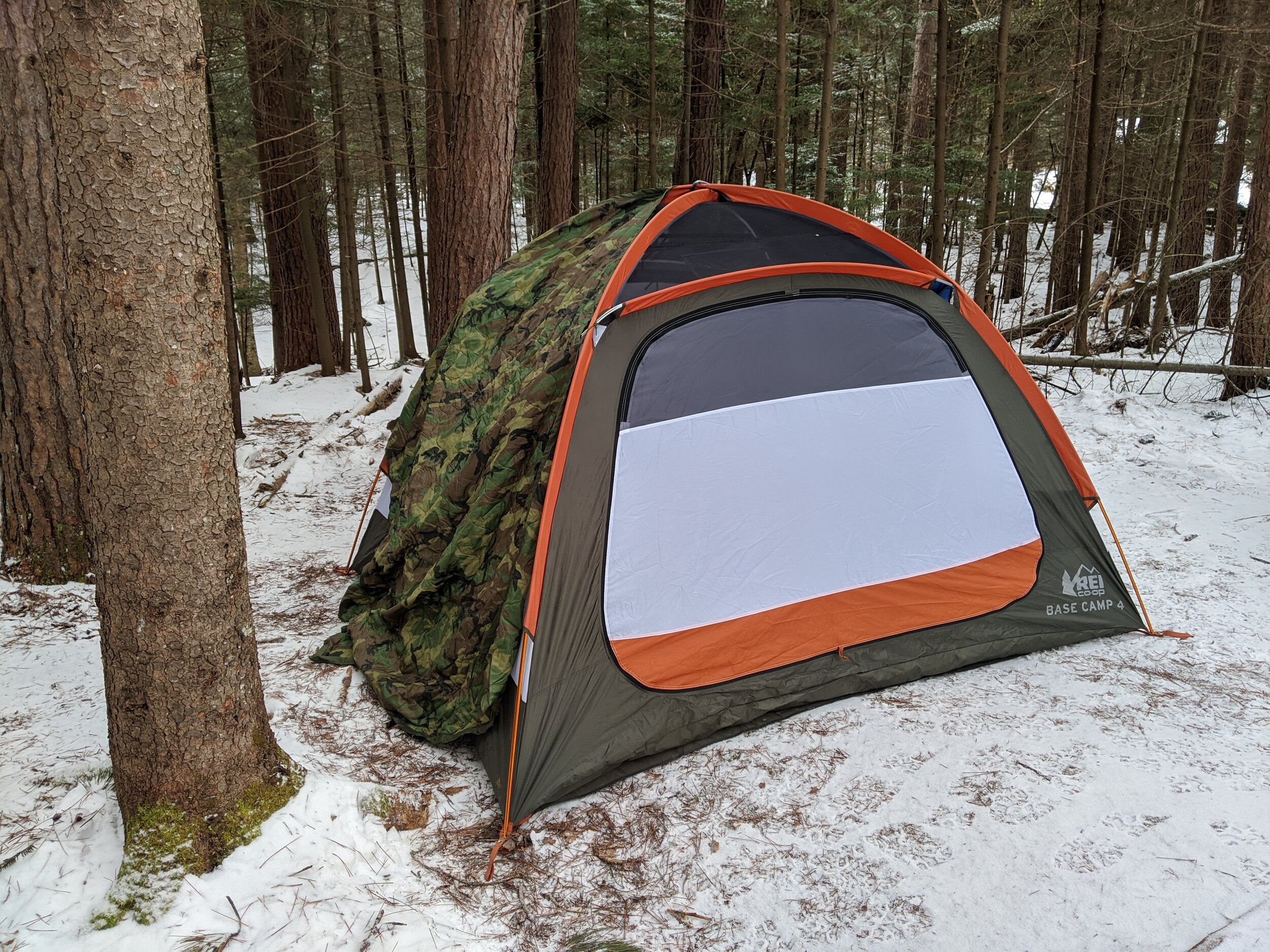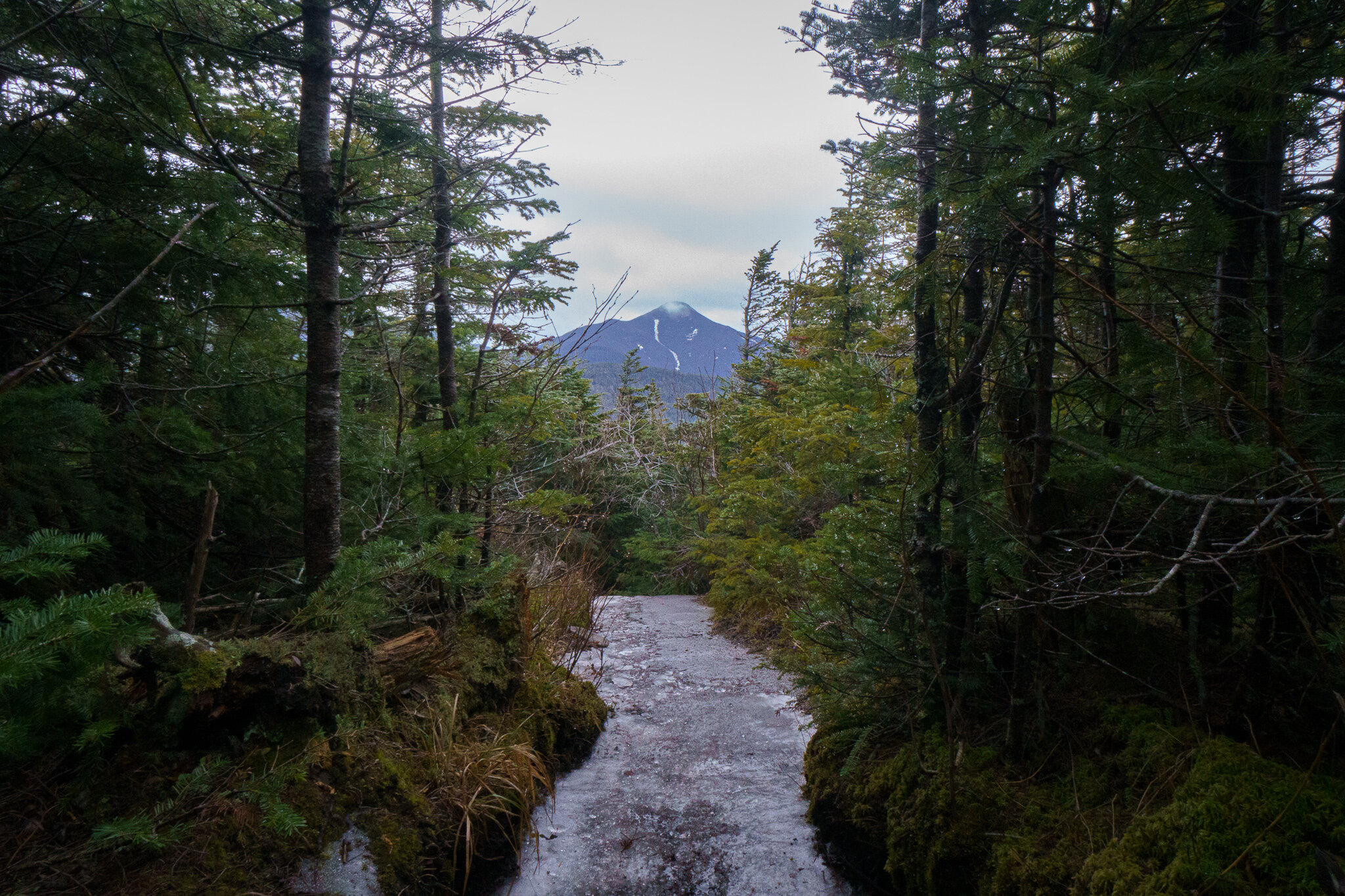Cold Weather Camping: 12 Tips to Expand Your Comfort Zone

The cold and I don’t get along. Ever since I was little, I disliked winter. The stinging cold. Your hands and toes going numb. Who in their right mind would enjoy this over the warm breezes of a summer evening?
So what the hell was I doing camping in the mountains of Upstate New York with temperatures dropping into the single digits?
The way I figure it, I’ve got a good 20-30 years max to keep on doing these types of adventures before my knees just give out on me. But if I could expand my comfort zone a bit to enjoy cold weather camping, I could double the amount of this tiny planet I can see in the short time I have on this Earth.
I still prefer the warmer weather, but I learned a lot while out there. Here are twelve tips and tricks I learned while expanding my comfort zone enough to actually enjoy cold weather camping.
1. Layer up on that hike, but stay comfortably cool
You may think that you want to be warm, but being warm puts you dangerously close to sweating, and sweating means freezing. The goal is to stay comfortably cool. You can do this by putting on and taking off layers as the situation dictates.
When sitting at camp on this last trip I had up to 6 layers on, but when hiking up to Indian Head, there were times when I was down to my baselayers.
Baselayers and Beard-Ice
2. Material Matters, and Cotton Kills
If you do happen to get wet for whatever reason, you can mitigate your misery by not wearing cotton. Cotton is great when dry, but as soon as it gets wet, it will sip heat away from you faster than Karen at a Starbucks on pumpkin spice day.
Wool is the best option (especially for baselayers and socks) as it retains its warmth even when wet. Beyond that, synthetic moisture-wicking material will do you well too.
3. Forget the Filter
If you are in the backcountry and need to purify water, choose boiling or purification tablets. Filters will retain a little moisture, and if that freezes it will develop micro-cracks without any obvious signs (except for the bubble-guts you’ll be getting later).
If you have no other choice, keep the filter in an inside pocket during the day and in the sleeping bag with you at night.
4. Stay hydrated (And keeping your water from freezing)
It can be easy to forget to drink water on a winter hike since you won’t be sweating as much. So it is extra important to make it a conscious effort to do so to prevent dehydration from sneaking up on you.
Keep in mind though, a normal water bottle won’t cut it in cold weather unless you enjoy sucking on flavorless popsicles. Keep warm water in an insulated bottle to prevent it from freezing. In a pinch you can boil clean snow, but don’t eat it as-is. It will lower your body temperature and put you at risk for hypothermia.
5. Pay Extra Attention to Your Route
It can be hard at times to stay on trail even in perfect conditions. Add fresh snow to obscure the path and it can be downright disorientating. Be sure to spend extra time studying your route before you head out into the wild. A GPS device is a great tool to have, but keep a physical map and compass on standby as a backup, as batteries become less reliable the colder they get.
Don’t know how to read a topographic map? Say no more. I’ve got you covered.
6. Insulate your tent
That thin nylon tent wall isn’t doing much to insulate you from the frigid night air. If your shelter has a tent fly, before you put it on, strap up some extra insulating material to sit between the tent and the fly (I used my hammock underquilt and a poncho liner). It’s not perfect but every little bit helps. Just be sure not to cover up the air vents on top.
You can also brush up loose leaves along the sidewalls of the tent to keep some of the warmth in.
7. Warm up your sleeping bag before you get in
If your sleeping bag is freezing when you get in, the only thing warming it up is going to be your body heat. Which means you’re going to get cold before you get warm. To warm it up beforehand, fill a BPA free bottle up with hot water, wrap it in a sock and toss it into your bag. Boom. Instant sauna stone. You can then tuck your new portable heater near your inner thigh (on the femoral artery) or down by your feet as you doze off to keep you warm all night.
8. Make your morning a little easier
Nothing is worse than waking up to put on freezing cold clothes. To prevent this misery, keep your clothes in your sleeping bag at night. The extra insulation will help keep you warm, and the pre-warmed clothes will make your morning a little more tolerable.
(Try this with your removable boot insoles as well!)
9. Double up on the sleeping pad
New campers often overlook the importance of a good sleeping pad. It’s not just for comfort, but to insulate you from the ground. The earth is large, and the frozen ground will cool you down before you warm it up.
Blowup sleeping pads are great for comfort, but when the temperature drops, double up with a closed foam pad as well (shiny side up to reflect those sweet, sweet radiant infrared waves back at you).
10. Keep your meals close and your snacks closer
Don’t leave your snacks in your daypack unless you enjoy chipping your tooth on a frozen Cliff Bar. Keep that stuff in your inner coat pocket so it’s ready to go when you need it.
11. The Anit-Diet: Every Day’s a Cheat Day When Winter Camping
To stay warm at night, you need to fuel your inner furnace with a high-carb, high-calorie meal at the end of the day. Your digestive tract will kick in and burn those calories as you sleep.
12. Don’t Hold it In
If you gotta go, you gotta go. It may be hard to get out of that cozy sleeping bag at night, but holding it in forces your body to burn calories to keep more mass (your full bladder) warm. For the more experienced cold weather camper, keep a *clearly marked* wide mouth bottle nearby to use as a pee bottle. If you’re feeling extra adventurous and trust your jar tightening abilities, you can place the now warm bottle down by your feet for some passive heating.
This of course might be difficult for the vaginally enhanced half of the population. But fear not! No Johnson? No problem! For the women who prefer not to expose themselves to the bitter cold when nature calls, modern gear like the “She-Pee” and the “GoGirl” make cold weather relief a lot easier. Probably best to practice at home first before taking it in the field though.
So there you have it. Twelve cold weather camping tips to expand the comfort zone. Got any tips of your own? Let me know in the comments below!
Bonus pic!:
My first cold weather camping experience from back in my Marine Corps days. (Circa 2005):








